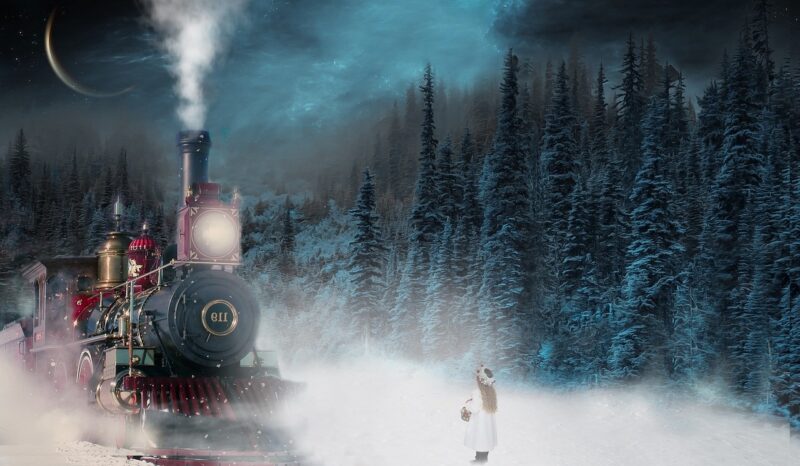The Dark Origins of Classic Fairy Tales: What They Didn’t Want You to Know
November 18, 2024

Fairy tales have long been a beloved part of cultural storytelling across the globe, enchanting audiences with their whimsical characters and moral lessons. However, beneath the surface of the charming narratives lies a darker history, one that reflects the societal values, fears, and harsh realities of the times in which these tales originated. As we delve into the shadowy roots of these classic stories, it becomes evident that the fairy tales we know and love today are often sanitized versions of much more grim realities.
### 1. The Historical Context of Fairy Tales
Fairy tales have roots that can be traced back to ancient times, often told orally before being written down by authors. These stories served not only as entertainment but also as moral guidelines, and they often contained valuable life lessons. However, the historical context reveals that many of these tales evolved in societies where life was particularly harsh and unforgiving, steeped in superstition and brutality.
– **Social Commentary:** Fairy tales frequently reflect the societal conditions of the period. Many tales were imagined during times of famine, war, or illness, making the elements of suffering and tragedy an integral part of their narratives.
– **Morality and Consequences:** In these tales, characters often face dire consequences for their actions, reinforcing a social order where moral righteousness is heavily emphasized.
Thus, fairy tales were a way for people to grapple with a world replete with danger, injustice, and fear.
### 2. The Original Grimm Tales: Not So Charming
The Brothers Grimm, renowned for compiling and popularizing fairy tales, sanitized many narratives to make them more palatable for children. The original versions of their tales, however, were often much more violent and disturbing. Here are some classic examples:
– **Snow White:** In the original tale, the Evil Queen orders Snow White to be killed and demands that the huntsman bring back her lungs and liver as proof. Furthermore, the Queen faces her own brutal punishment by being forced to dance in red-hot iron shoes at Snow White’s wedding.
– **Cinderella:** The classic story of Cinderella seems innocent, but the original narrative featured her stepsisters mutilating their own feet to fit into the glass slipper, losing their eyes as punishment for their cruelty.
These darker elements highlight the harsh realities of life during the times these stories were penned.
### 3. Beauty and the Beast: A Tale of Control and Isolation
The story of Beauty and the Beast has often been interpreted as a narrative about love conquering all. However, a deeper examination reveals themes of control and resilience within abusive relationships.
– **Consensual Dilemma:** The Beast represents the archetypal abuser, holding Beauty captive in his castle. The tale raises questions about consent and the complexities of relationships built on power dynamics.
– **Isolation as Punishment:** Beauty’s forced solitude in the Beast’s castle reflects societal attitudes towards women and the limitations placed on their autonomy.
Rather than simply a romance, the story portrays deep moral and psychological struggles that reflect cultural attitudes of existing power imbalances.
### 4. Little Red Riding Hood: A Harbinger of Danger
The tale of Little Red Riding Hood is often viewed as a cautionary story about disobedience. However, it also harbors stark warnings about the dangers of strangers.
– **Sexual Undertones:** Some interpretations suggest that the wolf symbolizes the predatory nature of men, making it a tale about the loss of innocence and the sexual awakening of young girls.
– **Consequences of Ignorance:** The moral aspects of the story reinforce that a lack of awareness can lead to disastrous consequences, echoing the fears of parents wishing to protect their children.
This duality presents a narrative rich with implications shaped by real societal fears and norms.
### 5. The Impact of Victorian Sensibilities
During the Victorian era, fairy tales underwent another transformation, largely due to an emphasis on morality and propriety. Popular authors like Charles Perrault contributed to this trend by smoothing out the tales and removing elements that were deemed inappropriate for children.
– **Moral Messages:** The newly sanitized tales emphasized virtue, respectability, and morality, thus ignoring the genuine complexity and darker themes present in the original narratives. This version of fairy tales aimed to uplift and educate the ‘innocent’ youth of the time.
– **Censorship:** Elements of violence, sexuality, and moral ambiguity were toned down to cater to a more conservative audience, overlooking the societal issues these stories initially reflected.
This Victorian curtailment of the narratives ultimately lead to the fairy tales we recognize today, stripped of their more complex pasts.
### 6. The Cultural Reflection of Fairy Tales
Today, fairy tales still hold a mirror to societal values and beliefs. Modern adaptations of classic stories continue to show the evolution of moral themes and cultural perceptions over time.
– **Reimaginings in Popular Culture:** From Disney animations that incorporate humor, romance, and friendship to darker retellings in movies and literature, fairy tales are continuously revised to better reflect contemporary values.
– **Lasting Relevance:** The stories remind us of life’s complexities, acting as vehicles for discussing critical social issues like identity, moral dilemmas, and the human condition.
Thus, the transformation of these tales shows how cultural narratives evolve in accordance with societal changes.
### Conclusion
The fairy tales that have been passed down through generations are not simply charming stories for children; they are intricate narratives rich with history, culture, and deeper meanings. The darker origins of these tales shed light on the human condition, revealing fears, struggles, and the moral complexities faced in their respective times. As we continue to share and adapt these stories, it’s vital to recognize the layers of meaning behind each tale and to appreciate the historical context that gives them depth and resonance. Uncovering the dark origins of classic fairy tales allows a fuller understanding of their significance and relevance today.
By reflecting on the darker elements within these narratives, we acknowledge not only their historical importance but also their capability to challenge and inspire future generations.







